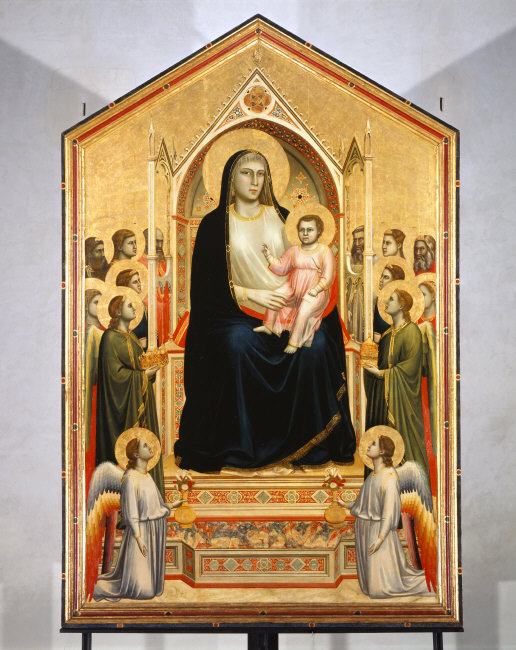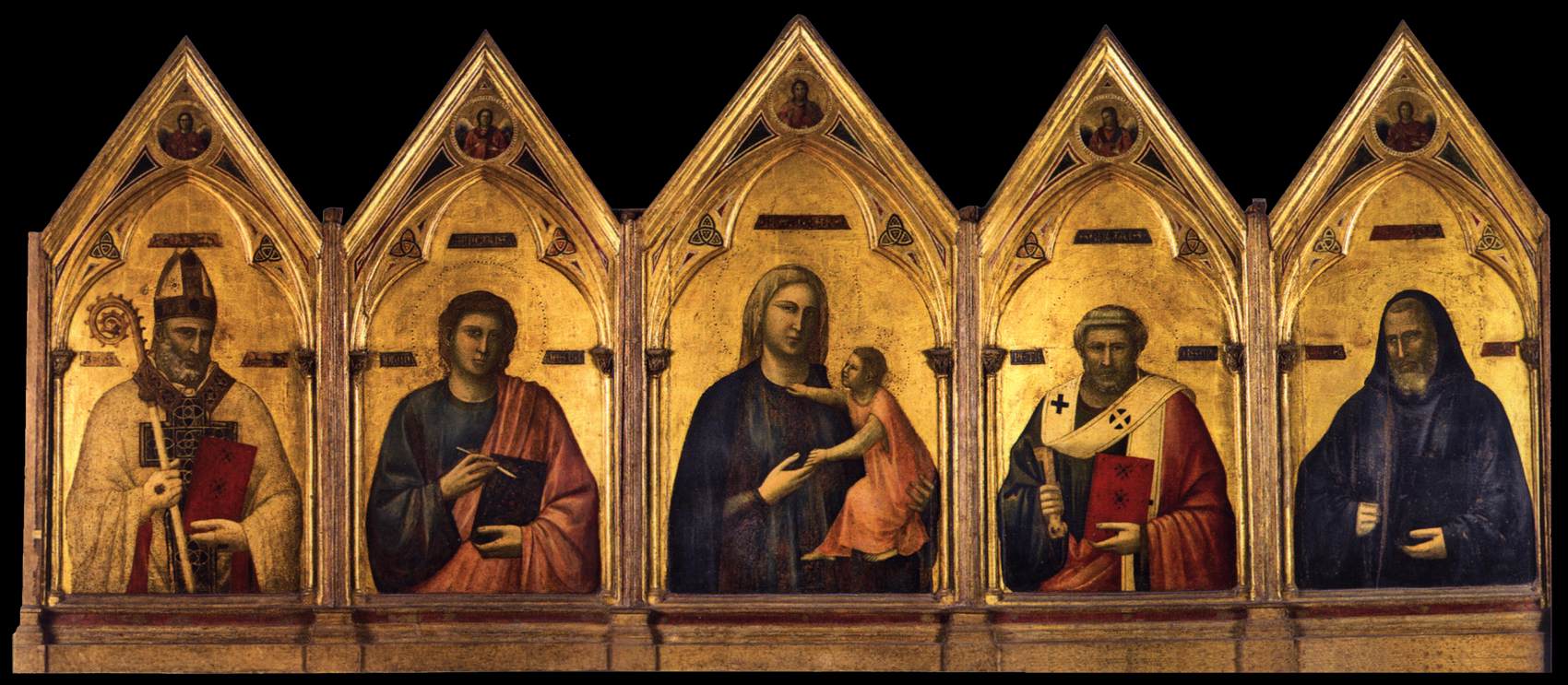By Anne Leader
Giotto di Bondone died on 8 January 1337 in Florence. Famous in his own day as an artistic innovator who explored naturalism and human emotion in ways not seen since antiquity, Giotto made his reputation through panel and fresco painting, as well as architectural design, in Florence, Padua, Rome, Assisi, and elsewhere.
Dante alludes to Giotto’s reputation in his verses on the transience of fame:
Credette Cimabue ne la pittura
tener lo campo, e ora ha Giotto il grido,
sì che la fama di colui è scura (Purgatory 11: 94-6)
(In painting Cimabue thought he held
the field, and now it’s Giotto they acclaim-
the former only keeps a shadowed fame.)
Giotto’s fame would not be eclipsed, however, and he is widely recognized as the father of the Italian Renaissance. Numerous authors have sung his praises, including Petrarch, Bocaccio, Ghiberti, Vasari, and many art historians. Among his most famous works are the frescoes narrating the lives of Mary and Jesus at the Scrovegni Chapel in Padua, the Bardi and Peruzzi chapels in Santa Croce in Florence, and altarpieces for churches like Ognissanti and the Florentine Badia. Debate continues as to whether he or a group of Roman artists was responsible for the Life of St. Francis in the upper church of San Francesco in Assisi, but Giotto’s impact on the development of Italian Renaissance painting is unquestioned.
Reference: Creighton E. Gilbert. “Giotto.” Grove Art Online. Oxford Art Online. Oxford University Press, http://www.oxfordartonline.com/subscriber/article/grove/art/T032431.
Joachim and the Shepherds, Nativity, Christ Entering Jerusalem, and Lamentation, 1303–6, fresco, Arena Chapel, Padua; photo credit: Scala/Art Resource, NY
Ognissanti Madonna, tempera on panel, c. 1310 (Florence, Galleria degli Uffizi); photo credit: Scala/Art Resource, NY
Apparition of St Francis at Arles, c. 1320, fresco, Bardi Chapel, Santa Croce, Florence; Photo credit: Scala/Art Resource, NY
Raising of Drusiana, c. 1325, fresco, Peruzzi Chapel, Santa Croce, Florence
Giotto (attrib.) or Roman Painters, St Francis Renouncing his Worldly Goods, late 13th or early 14th century, fresco, Upper Church, San Francesco, Assisi; Photo credit: Erich Lessing/Art Resource, NY
Badia Polyptych, 1300-2, Galleria degli Uffizi, Florence









